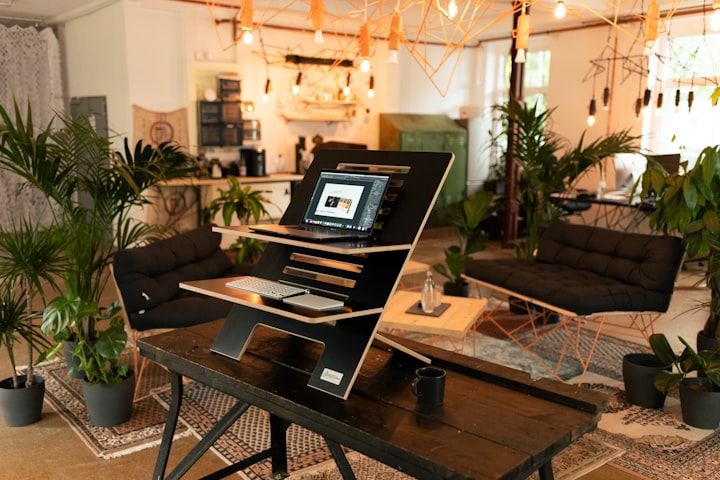10 Things To Consider While Upgrading Lighting in a Commercial Building
Tips for optimizing lighting performance in a commercial setup

If you are planning a lighting upgrade for your commercial building, here are ten tips that can help you achieve the best results:
Conduct a Lighting Audit
Before upgrading your lighting, it is essential to conduct a lighting audit to assess your current lighting system’s strengths and weaknesses. This can help you identify areas where you can make improvements and determine your lighting upgrade priorities.
Consider Energy-Efficient Technologies
When choosing the light fixtures for your commercial building, consider energy-efficient technologies such as LEDs, CFLs, and T5 or T8 fluorescent tubes. These technologies can reduce your energy consumption and lower your electricity bills.
Optimize Natural Lighting
Maximizing natural lighting can help reduce your energy consumption and improve the quality of light in your building. Consider installing skylights or windows that allow more natural light to enter the building.
Pick the Right Color Temperature
The color temperature of your lighting can have a significant impact on the mood and productivity of your employees. Select a color temperature that is appropriate for the activity in each area of your building, such as warmer tones for relaxation areas and cooler tones for task-oriented areas.
Use Motion Sensors
Using motion sensors in areas with low or intermittent occupancy can help reduce your energy consumption by automatically turning off lights when no one is present.
Implement Lighting Controls
Lighting controls, such as dimmers, timers, and sensors, can help you adjust your lighting according to your needs, reduce your energy consumption, and extend the life of your lighting fixtures.
Consider Lighting Zones
Creating lighting zones can help you optimize your lighting system by providing the appropriate amount of light for each area of your building. This can help you save energy and reduce lighting costs.
Use Task Lighting
Task lighting, such as desk lamps and under-cabinet lights, can help employees perform tasks more efficiently and reduce the overall lighting load in your building.
Consider Maintenance Requirements
When choosing the light fixtures, consider the maintenance requirements and costs associated with each option. Opt for fixtures that have a long lifespan and require minimal maintenance to reduce your maintenance expenses.
Work with a Professional Lighting Contractor: Working with a professional lighting contractor can help you make informed decisions about your lighting upgrade, ensure that your lighting system meets all safety and building codes, and achieve the best possible results.
Upgrading lighting in a commercial building can be a great way to improve energy efficiency, reduce costs, and enhance the overall appearance of the space. However, it's important to take safety precautions to prevent accidents or damage during the process.
Safety precautions to consider
Hire a Professional: It's important to hire a professional electrician or lighting contractor with experience in commercial lighting installation. They can ensure that the work is done safely and up to code.
Turn Off Power: Before starting any work on the electrical system, turn off the power to the area where the lighting upgrade will take place. Use a voltage detector to confirm that the power is off.
Wear Protective Gear: When working with electricity, wear protective gear such as rubber-soled shoes, insulated gloves, and safety glasses to protect against electrical shock.
Use Proper Tools: Use the right tools for the job, including wire strippers, wire cutters, and pliers. Ensure that they are in good condition and properly insulated.
Avoid Overloading Circuits: Be careful not to overload circuits when installing new lighting fixtures. Overloading can cause electrical fires or damage to the electrical system.
Properly Dispose of Old Lighting: Properly dispose of old lighting fixtures, including bulbs and ballasts. These items may contain hazardous materials and should be disposed of in accordance with local regulations.
Follow Safety Standards: Follow all applicable safety standards and regulations, including OSHA (or the guild lines and standards mandated by your government) guidelines for electrical safety in the workplace.
By taking these safety precautions, you can ensure that your lighting upgrade is completed safely and efficiently, with minimal risk of accidents or damage.
TL;DR
A lighting upgrade can improve your commercial building’s energy efficiency, productivity, and overall comfort. By following these ten tips, you can optimize your lighting system, reduce your energy consumption, and achieve long-term cost savings.
About the Creator
Ecofin Solutions ForU
A Melbourne based energy consultant company dealing with energy upgrades (rebated or free LED lights replacement) and smart appliances






Comments
There are no comments for this story
Be the first to respond and start the conversation.